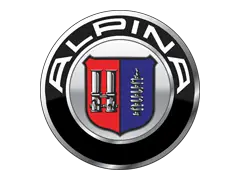Volkswagen Caddy Maxi V 1.5 TSI (114 Hp) DSG
Volkswagen Caddy:
The Volkswagen Caddy is a panel van and leisure activity vehicle produced by the German automaker Volkswagen Group since 1979. It is sold in Europe and in other markets around the world. The Volkswagen Caddy was first introduced in North America in 1979 and in Europe in 1982. The first and second generations also had pick-up variants.
The following vehicles are related to the Volkswagen Caddy and are also manufactured by the Volkswagen Group.
Released in 1979, the first Volkswagen Caddy is a coupe utility and van based on the Volkswagen Group A1 platform, shared with the small family car Volkswagen Golf Mk1....(Read more on Wikipedia)
Maxi V Overview:
Volkswagen Caddy (Maxi V). With 220 Nm of torque, it offers ample pulling power. It has moderate fuel consumption (~6.8 l/100km). With a weight of 1673 kg, it falls in the mid‑range. Front‑wheel drive delivers efficiency and easy handling. Acceleration is relatively slow (0–100 km/h in 12.4 s). The top speed reaches 181 km/h. A spacious vehicle designed to transport passengers comfortably, often with sliding doors. Seating for 5 makes it ideal for daily use.
People's Opinions:
Our robots surveyed the comments on Reddit to find out people's satisfaction with Volkswagen Caddy. About 460 comments were scanned, 52 comments (11.3% of the total comments) were positive, compared to 17 negative comments (3.7% of the total comments). The remaining 391 comments were neutral (did not mention any praise or criticism) (%neutralPercentag%% of the total comments), and thus it received a rating of 1 stars out of 5.

Pros and Cons:
Pros:
• Advanced ICE tech: Direct injection, DOHC, Turbocharger, Intercooler.• Complies withEuro 6d-ISC-FCM emission standard.
• Good combined fuel economy: 6.3L/100 km.
• Front-wheel drive offers efficiency and lower weight.
• Independent suspension (front: Independent, type McPherson with coil spring and anti-roll bar, rear: Rigid axle suspension, Trailing arm, Coil spring) for comfort and handling.
• Ventilated front brakes improve stopping power under load.
• Rack-and-pinion steering for precise control.
• ABS improves braking safety.
• Electric power steering improves efficiency and feel.
• Generous trunk space: 2556 L.
• Reasonable curb weight (1498 kg).
• High payload capacity:598 kg.
• Towing without brakes:750 kg.
• Tight turning circle of 11.4 m for easy maneuvering.
• Adequate ground clearance (144 mm).
Cons:
• Underpowered ICE: only 114 hp.• Low specific output ( 76.1 hp/L) suggests less efficient ICE tuning.
• Sluggish ICE-only acceleration: 11.9 sec.
• Sluggish 0–100 km/h time: 11.9 sec.
• Weak weight-to-power: ≈ 76.3 hp/tonne.
• Low weight-to-torque: ≈ 147.1 Nm/tonne.
• Limited towing: 1400 kg with brakes (12%).
Based on the pros and cons, the car is rated 3/5

Specifications:
Specifications are compared to those of the previous generation(IV: 2018 - 2020).
General:
Brand: Volkswagen
Model: Caddy
Generation: Maxi V
Modification (Engine): 1.5 TSI (114 Hp) DSG
Start of production: 2020
End of production: April, 2024
Powertrain Architecture: Internal Combustion engine
Body type: Minivan
Seats: 5-7
Doors: 4-5
Engine:
Engine systems: Start & Stop System
Power: 114 Hp @ 4500-6000 rpm. Same horsepower
Power per litre: 76.1 Hp/l [445mm more.]
Torque: 220 Nm @ 1750-3000 rpm.
Engine Model/Code: EA211 evo / DPBC More details about the engine EA211 evo / DPBC
Engine displacement: 1498
Number of cylinders: 4
Engine configuration: Inline
Number of valves per cylinder: 4
Fuel injection system: Direct injection
Engine aspiration: Turbocharger, Intercooler
Valvetrain: DOHC
Engine oil capacity: 4.3 l
Engine layout: Front, Transverse
Cylinder Bore: 74.5 mm
Piston Stroke: 85.9 mm
Compression ratio: 12.5:1
Performance:
Fuel Type: Petrol (Gasoline)
Fuel consumption (economy) - urban: 6.7-6.9 l/100 km
Fuel consumption (economy) - extra urban: 5.3 l/100 km
Combined fuel consumption (WLTP): 6.6-7.2 l/100 km
Fuel consumption at Low speed (WLTP): 8.7-9 l/100 km
Fuel consumption at Medium speed (WLTP): 6.6-7.1 l/100 km
Fuel consumption at high speed (WLTP): 5.6-6 l/100 km
Fuel consumption at very high speed (WLTP): 6.8-7.5 l/100 km
Fuel consumption (economy) - urban (NEDC, WLTP equivalent): 6.7-6.9 l/100 km
Fuel consumption (economy) - extra urban (NEDC, WLTP equivalent): 5.3 l/100 km
Fuel consumption (economy) - combined (NEDC, WLTP equivalent): 5.8 l/100 km
Fuel consumption (economy) - combined: 5.8 l/100 km
Emission standard: Euro 6d-ISC-FCM
Acceleration 0 - 100 km/h: 12.4 sec
Acceleration 0 - 62 mph: 12.4 sec
Maximum speed: 181 km/h
Weight-to-power ratio: 14.6 kg/Hp, 68.6 Hp/tonne
Weight-to-torque ratio: 7.6 kg/Nm, 132.5 Nm/tonne
Acceleration 0 - 60 mph: 11.8 sec
Space:
Kerb Weight: 1661-1686
Max. weight: 2350
Max. roof load: 100 kg
Max load: 664-689
Trunk (boot) space - maximum: 3105 l
Trunk (boot) space - minimum: 446 l
Permitted trailer load with brakes (12%): 1400 kg
Fuel tank capacity: 50 l
Permitted trailer load without brakes: 750 kg
Permitted towbar download: 75 kg
Size:
Ramp-over (brakeover) angle: 11.8°
Length: 4853 mm [445mm more.]
Width: 1855 mm [62mm more.]
Height: 1836 mm [22mm less.]
Wheelbase: 2970 mm [288mm more.]
Width including mirrors: 2100 mm
Front overhang: 890 mm
Rear overhang: 993 mm
Ride height (ground clearance): 143 mm
Minimum turning circle (turning diameter): 12.1 m [above average]
Approach angle: 14.7°
Departure angle: 15.9°
Powertrain:
Drivetrain Architecture: The Internal combustion engine (ICE) drives the front wheels of the vehicle.
Drive wheel: Front wheel drive
Number of gears: 7
Transmission type: Automatic
Gearbox type: DSG
Front brakes: Ventilated discs, 312x25 mm [Best for performance and cooling.]
Rear brakes: Disc, 272x10 mm [above average]
Assisting systems: ABS (Anti-lock braking system)
Steering type: Steering rack and pinion
Power steering: Electric Steering
Tires size: 205/60 R16; 215/55 R17
Wheel rims size: 6.5J x 16; 6.5J x 17
Front suspension: Independent, type McPherson with coil spring and anti-roll bar
Rear suspension: Rigid axle suspension, Trailing arm, Coil spring























Was the Volkswagen Caddy what you expected? Let us know!